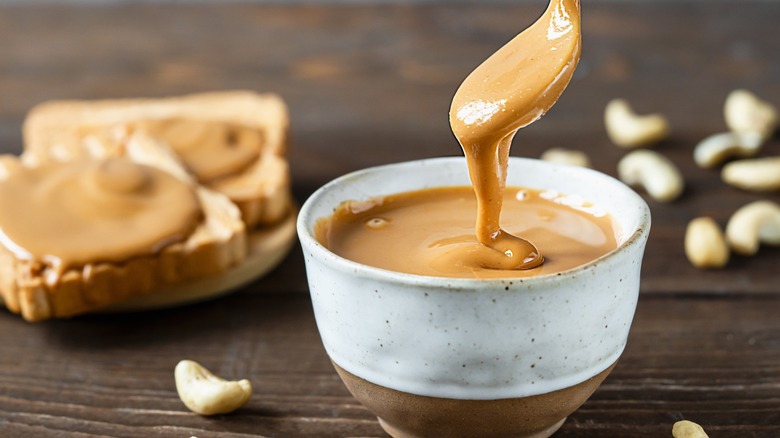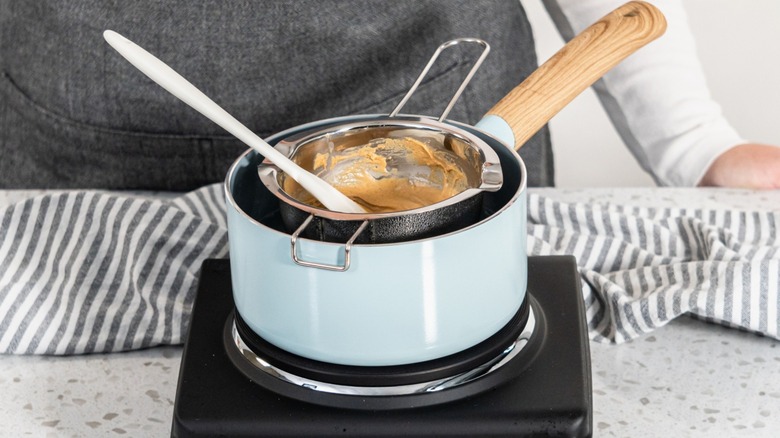How, Exactly, Do You Melt Peanut Butter?
We may receive a commission on purchases made from links.
Few folks will turn down a classic peanut butter sandwich when hunger strikes, but the ingredient has many more uses than a simple spread. Sometimes, there is nothing better than having a creamy peanut butter topping for ice cream or popcorn, and this nut butter can even be made into a flavorful salad dressing. If you are making a savory peanut sauce, an almost empty jar of peanut butter works best, but when you need a more substantial amount of the melted spread, look to the microwave.
The microwave can make quick work of melting things like chocolate chips and marshmallows, but knowing how exactly to do it can be the difference between a thick, liquid consistency and a clumpy mess. The first step is reaching for a microwave-safe bowl to place the peanut butter in, and bear in mind there is no such thing as microwave-safe plastic. A glass or ceramic bowl is what you are looking for here — we recommend the Bovado 1.5 Quart Glass Bowl.
Once in the bowl, heat your peanut butter at 30-second intervals, giving it a stir in between each session. Be cautious when grabbing the bowl, as it may need a few seconds to cool down, and you might want to consider placing something over it in the microwave so that no peanut butter splatters inside. You will have to repeat the process a few times until it becomes liquid, but it is better than the alternative of melting it on the stove.
Advantages of using a microwave over melting peanut butter on the stove
While you can certainly liquefy peanut butter on the stove, using the microwave makes the task much easier. When using the stovetop, it is best to set up a double boiler system so the peanut butter melts slowly, as introducing too much heat too quickly can make it seize up. Melting it on the stove also requires constant stirring, whether you use a double-boiler method or not. The microwave does the job faster and doesn't require your undivided attention while it softens.
Another advantage of using the microwave instead of the stove to melt peanut butter is you only need to dirty a spoon and a bowl. Contrasted with creating a sticky mess in a pot plus using a whisk, a spatula, and a receptacle for the gooey end result, the microwave stands out as the superior choice. For every task, you need the right tools for the job, and the microwave is just that when it comes to melting peanut butter, especially for the sake of time and cleaning up afterward.

